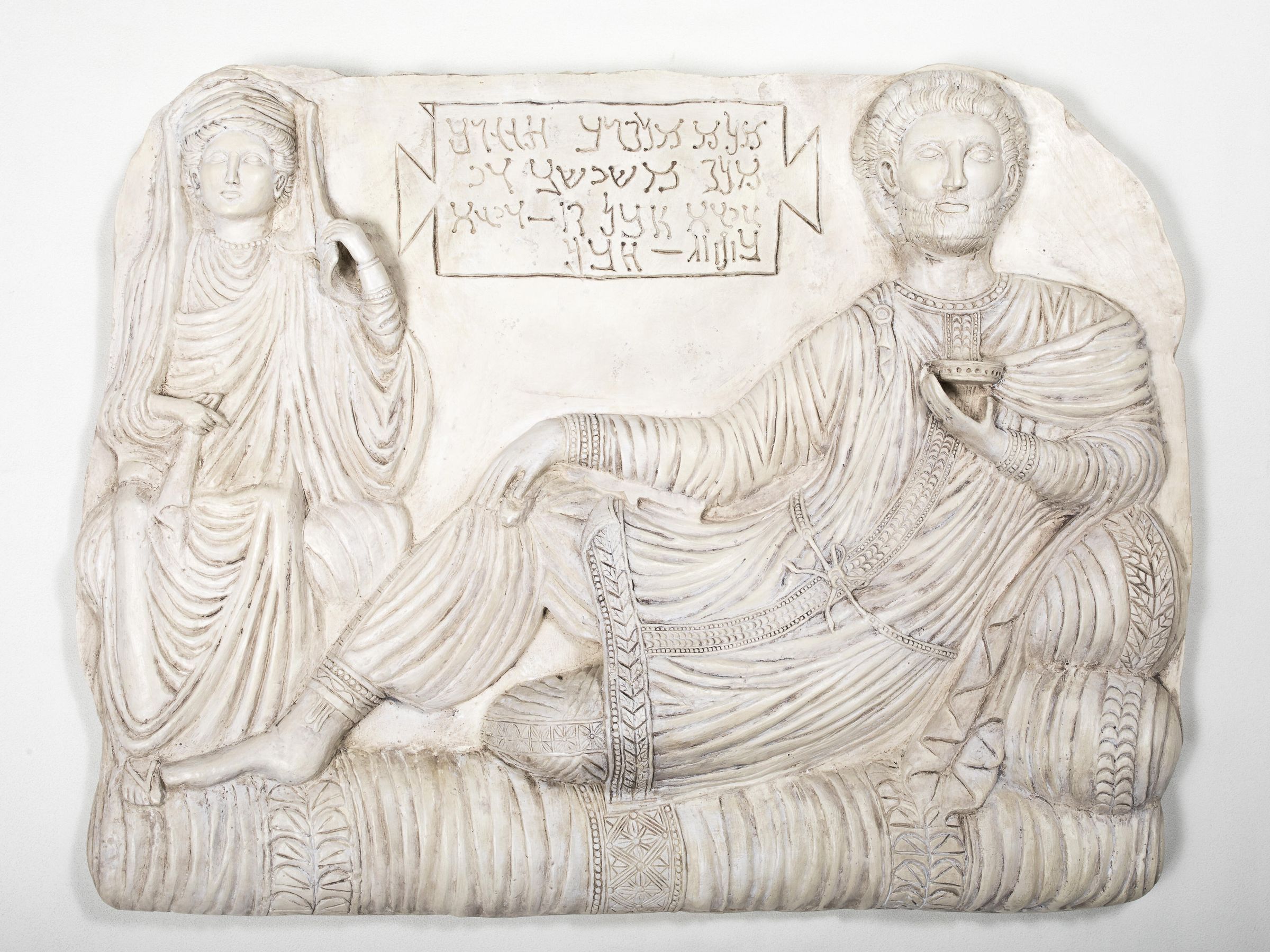Relief of Maliku
Name/Title
Relief of MalikuEntry/Object ID
06NE17112Description
This funerary stele depicts a man named Maliku, accompanied by his wife, Hadira, attending a banquet. This rectangular relief shows Maliku reclining on a triclinium, a dining couch, holding a cup in his hand. He is wearing oriental clothing. His costume which was inherited from the Parthian tradition is that of the caravanners. Maliku is wearing an embroidered tunic and cloak held by a fibula at the shoulder over embroidered baggy trousers drawn in at the ankles. He is also wearing boots which were worn on the steppe. His head is turned to full face position with the eyes fixed on eternity. He is bareheaded with well trimmed curly hair, bread, and moustache. His wife, Hadira, is sitting at her husband's feet(to his right), at a smaller scale. She is wearing Greek-style clothing. She is wearing a tunic beneath a cloak drawn up to cover the head and held back with the left hand. She is wearing heavy jewelry on her ears, neck, and wrists. She is also looking straight on into the distance. The triclinium has a thick mattress and cushions on it as well as elaborate embroidery. There is also a cartouche in the field between their two heads which is borrowed from Roman practices of lapidary inscriptions.Type of Sculpture
ReliefArtwork Details
Medium
PlasterContext
The caravan town of Palmyrene was the heart of trade between India and the Mediterranean. The image provides a wealth of information about the cosmopolitan culture of the great Palmyrene families. The inscription and his luxurious clothing, possibly imported from central Asia or Persia, are a reminder of the source of his wealth. The image of his wife provides information on her role in the family. She looked after the house but she was also familiar with the refined aspects of western life. Her jewelry shows that she had a share in the prosperity of the family. Her position in relation to her husband is also interesting. Being seated, she reaches the same height in the relief as her reclining husband, a discreet allusion to her status, though she is shown to be slightly inferior. This inferiority of status is visible by the smaller size of her portrait and her position by his feet. She was nonetheless respected and occupies a dignified position beside her husband. Banqueting in a reclining position is a practice of the Greco-Roman world, which gained a funerary significance in Palmyra.Made/Created
Date made
200 CE - 250 CETime Period
Roman ImperialEthnography
Culture/Tribe
Near Eastern - Syrian

